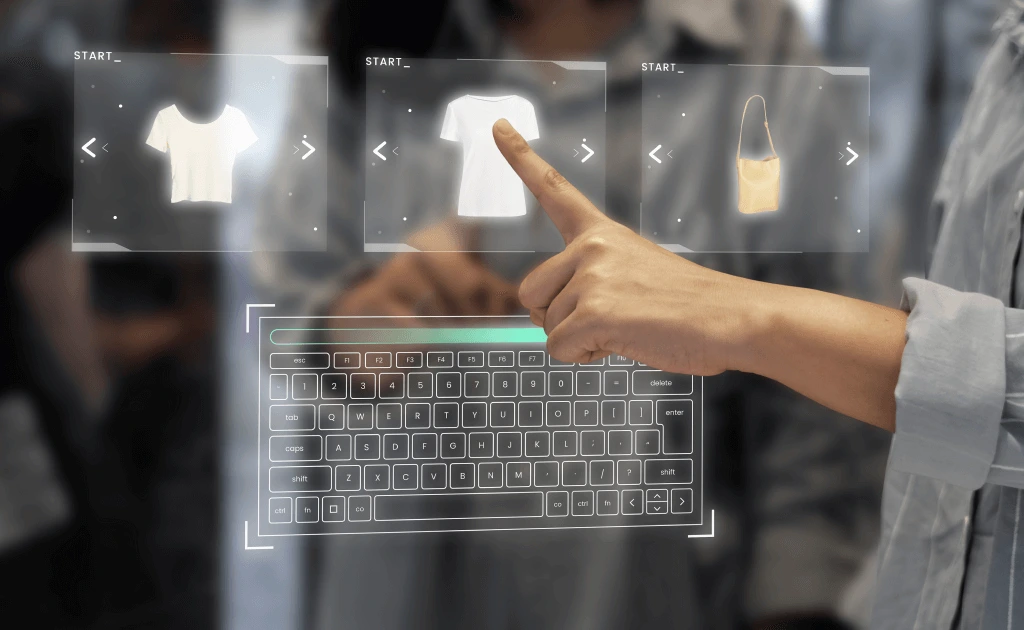Augmented Reality (AR) is transforming the way consumers interact with products, brands, and online shopping experiences. As technology advances, AR is becoming an essential tool for e-commerce and retail businesses, enhancing customer engagement, improving conversions, and reducing return rates. Let’s explore how AR is shaping the future of retail and e-commerce.
1. Enhancing Online Shopping with Virtual Try-Ons
One of the biggest challenges in online shopping is the inability to try products before purchasing. AR technology solves this by offering virtual try-ons for clothing, accessories, makeup, and even eyewear. Brands like Sephora and Warby Parker allow customers to see how products look on their faces before making a purchase, boosting confidence and reducing returns.
2. Interactive Product Visualization
With AR, customers can visualize products in their real environment before buying. Whether it’s furniture, home décor, or electronics, AR-powered apps like IKEA Place let users see how an item would fit in their space, ensuring the right choice before purchase. This not only enhances customer satisfaction but also minimizes return rates.
3. Personalized Shopping Experience
AR allows brands to offer personalized recommendations based on customer preferences. With AI and AR combined, e-commerce platforms can analyze user behavior and provide customized product suggestions, creating a more engaging and interactive shopping experience.
4. Virtual Storefronts & AR-Powered In-Store Navigation
Retailers are using AR to create immersive virtual storefronts where customers can browse and shop just like they would in a physical store. Additionally, in brick-and-mortar stores, AR-based navigation apps help shoppers locate products quickly, improving in-store efficiency and enhancing the shopping experience.
5. Gamification & Engagement
AR-driven gamification is being widely adopted to increase customer engagement. Retailers use AR filters, treasure hunts, and interactive campaigns to attract and retain customers. A great example is Nike, which has implemented AR-powered experiences in its app to engage users and offer exclusive rewards.
6. AR-Powered Social Shopping
Social media platforms like Instagram, Snapchat, and TikTok are integrating AR shopping experiences, allowing users to try products virtually and purchase them instantly. Brands leverage AR filters and effects to create a fun and interactive way for customers to engage with their products.
7. Reducing Return Rates with AR
Product returns are a major challenge for e-commerce businesses. AR helps in reducing return rates by providing accurate product visualizations, try-ons, and detailed insights before purchase. This minimizes buyer’s remorse and ensures customers receive what they expect.
8. Future Trends: What’s Next?
- AI-Powered AR Shopping Assistants: Smart AR assistants will provide real-time product suggestions and answer customer queries.
- Metaverse Shopping: Virtual stores in the metaverse will revolutionize e-commerce, allowing users to shop in 3D environments.
- AR-Powered Smart Glasses: With advancements in wearable AR technology, customers will experience hands-free, real-time shopping assistance.
Conclusion
AR is revolutionizing the retail and e-commerce industry by bridging the gap between physical and digital shopping experiences. From virtual try-ons to interactive product visualization, businesses leveraging AR technology are creating more engaging, efficient, and personalized shopping experiences for customers. As AR continues to evolve, it will play a critical role in shaping the future of retail and e-commerce.


